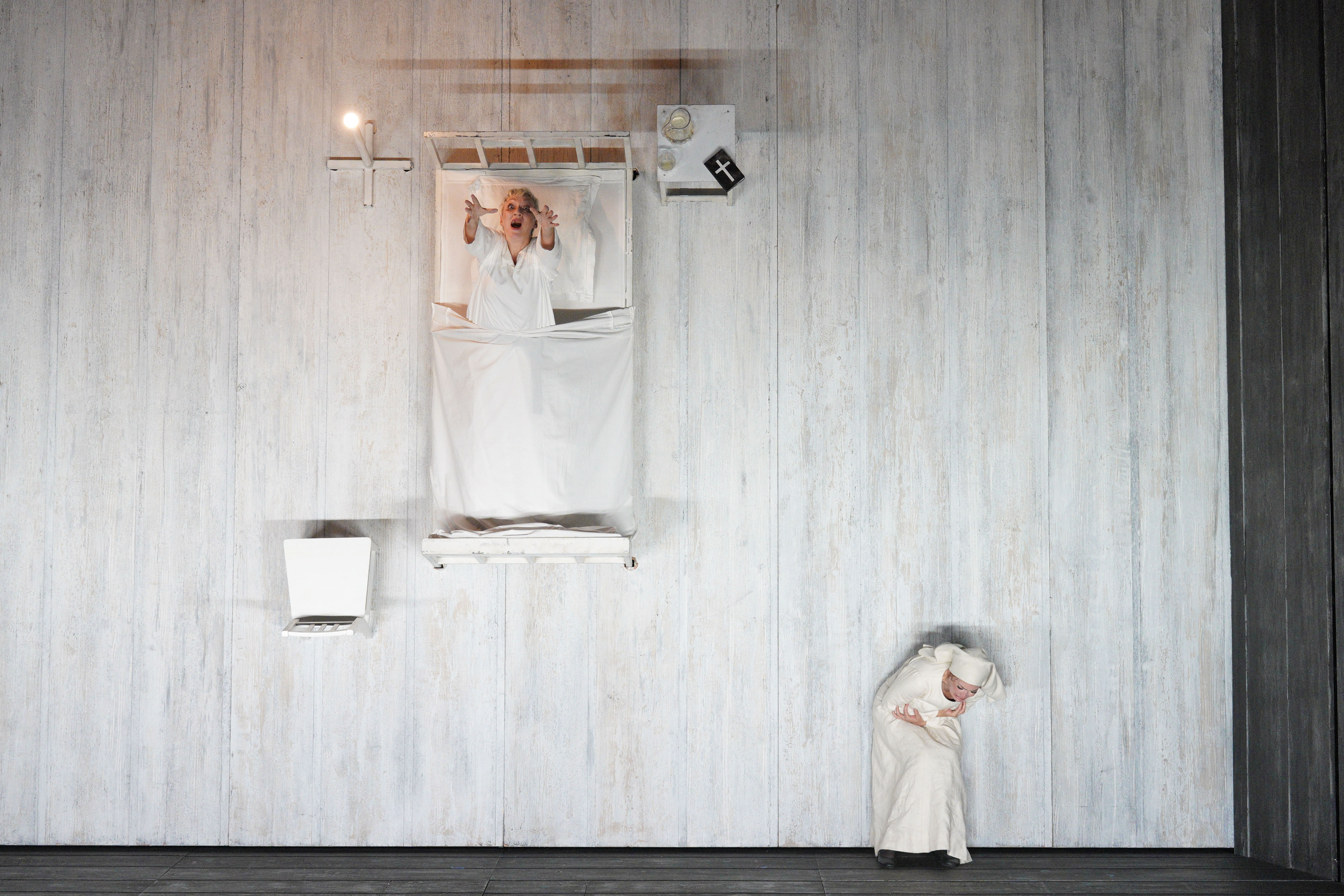Backstage with Matthew: Finding inner truth
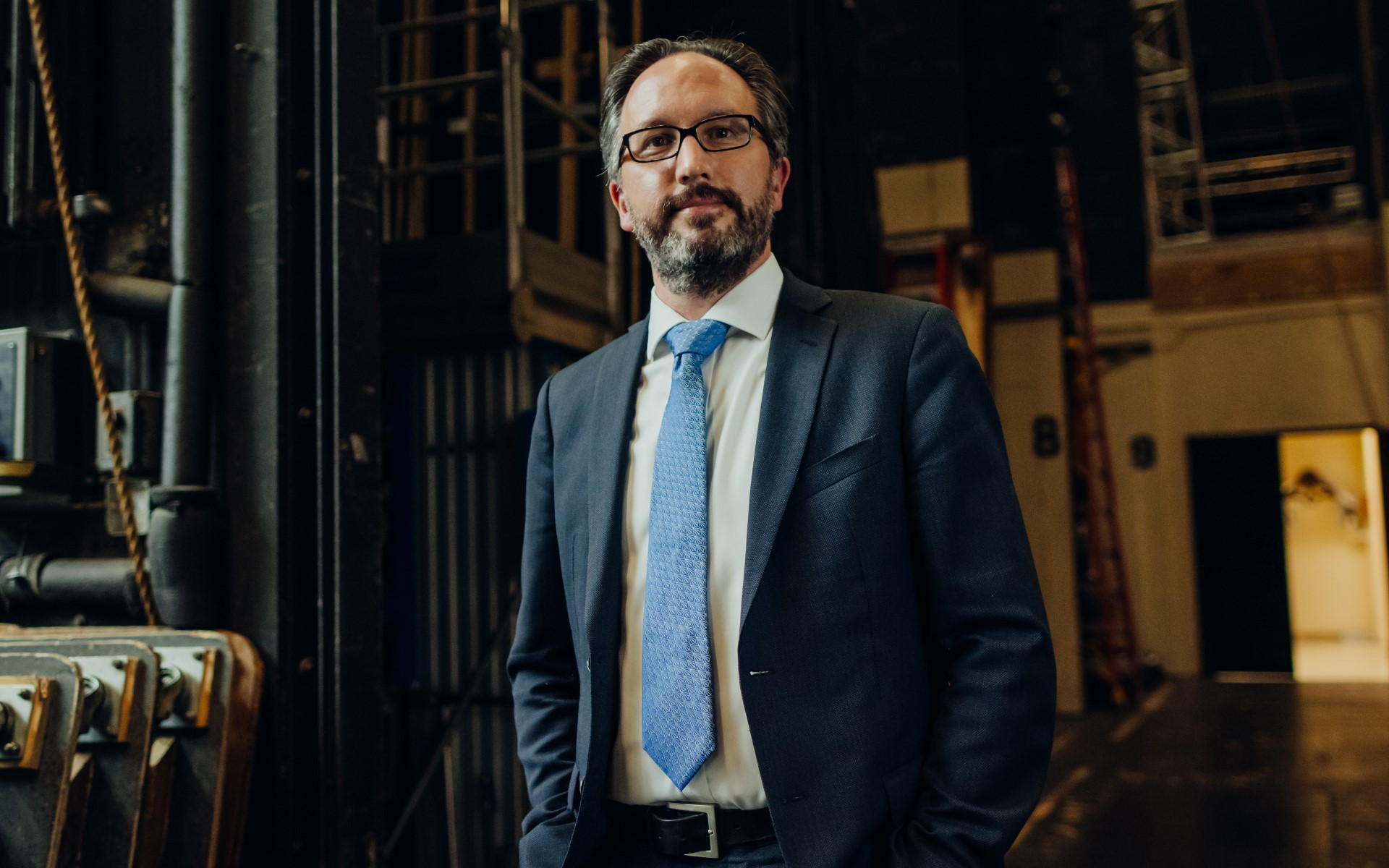
Dialogues of the Carmelites is an expression of faith tested to the limits, seen both in the collective martyrdom at the end of the opera, but also in the harrowing death of the Mother Superior, Madame de Croissy, at the end of the first act. In a 20-minute tour-de-force scene, the Mother Superior makes her exit from the world as we all look on, transfixed on her agony, her fear, and her ultimate passing. This production by Olivier Py—seen in the US for the first time—brings this scene into unique relief with Madame Croissy’s death-bed vertically arrayed in front of us, with furniture and even a glass of water suspended on a vertical plane. We are voyeurs to her death, looking down as though from above. It is agonizing and sublime at the same time.
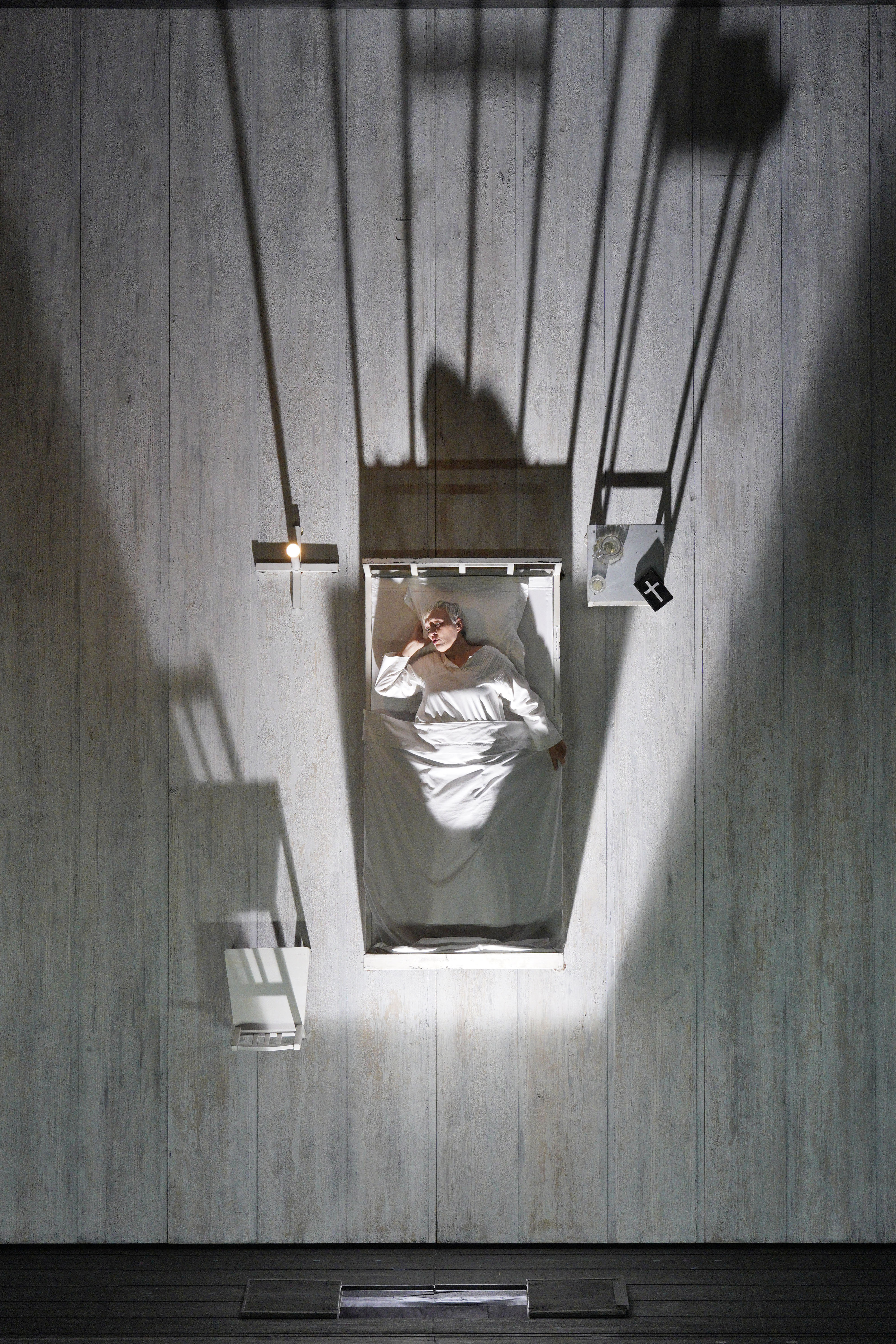
Our Madame de Croissy is making her San Francisco Opera debut. Acclaimed German mezzo-soprano Michaela Schuster is in demand all over the world for some of the most formidable roles of the repertoire. This marks her role debut as Croissy, and a spectacular house debut with us. Her death is one of the most compelling scenes on stage I have ever been privileged to witness. I wanted to share Michaela’s reflections on how she comes to a scene like this as an artist. How does she leave us, the audience, completely undone, but stay focused musically and dramatically through this massive scene?
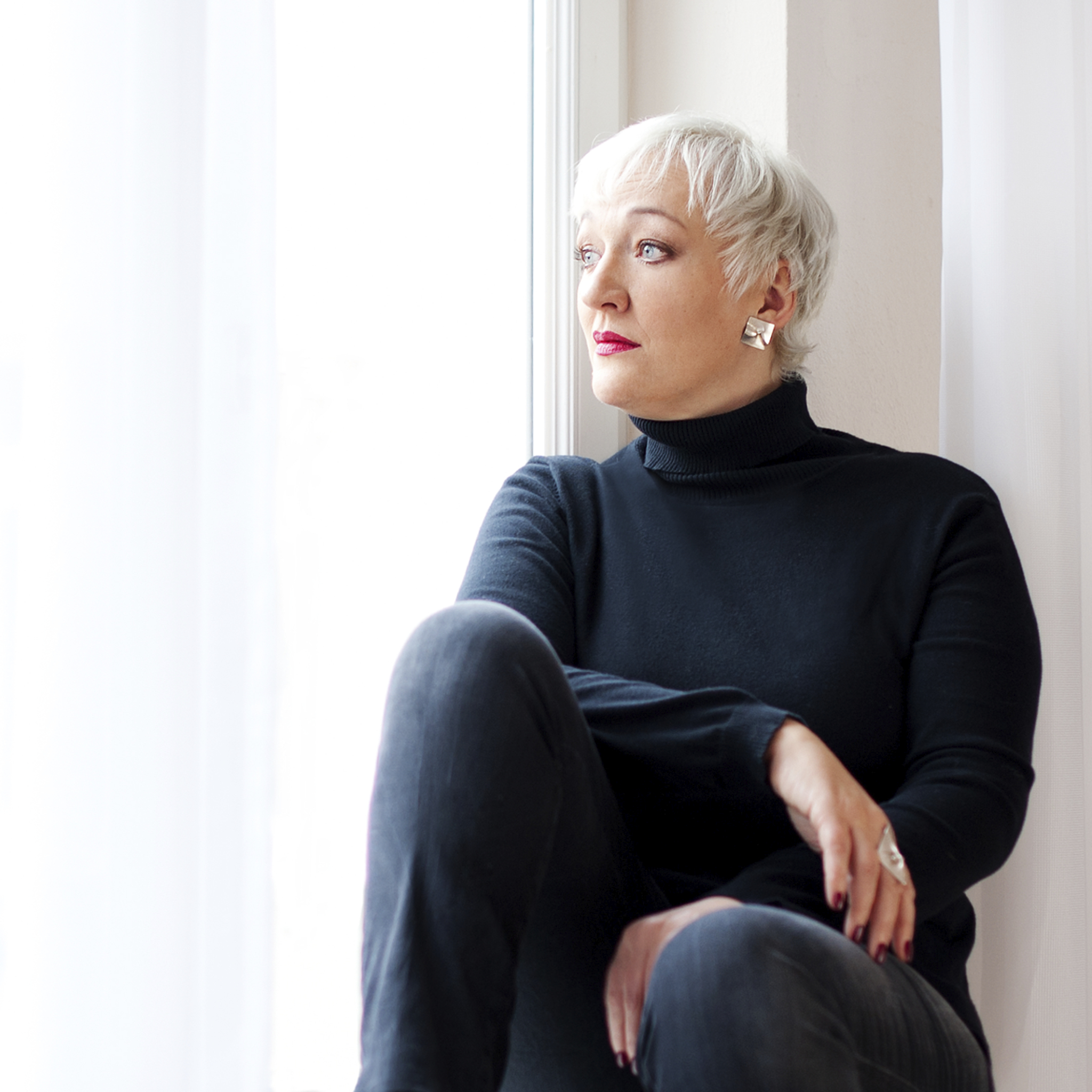
There really is no comparable role to Croissy. Croissy is a fiercely strong character but with moments of incredible tenderness, and an elongated death scene that builds in a crescendo of emotion. Other than her points of connection with the novice, Sister Blanche (a daughter figure to her), she is very much alone, denied even a final dose of medicine. How does she find the soul of the character at that moment when she is so isolated on stage?
Michaela starts with the technical aspect—she builds up the role dispassionately at first—text and music, until the role is secure. Then there is the moment where she must find the soul of the character. It is a moment that requires what Michaela calls in German, “Mutig”—a bravery in which you must stand for yourself, here finding a vulnerability that will touch you, haunt you. Michaela knows that there will be a point in the rehearsal process at which she will have to go to this place—a point in which she must let herself into the depth of the character. It’s an intense point that pervades her waking and dreaming hours while she’s exploring it, but she must find that deep place if she is to give it to us, drawing on her own life experiences, becoming undone herself.
Once Michaela has journeyed to that very vulnerable place in rehearsal, she then translates those feelings and the physical manifestations of those feelings into something she can replicate at an emotional distance. She is able to unlock the feelings without having to go to such a personal place in performance. In some of her early roles as a young artist (including Santuzza in Cavalleria Rusticana and Charlotte in Werther), before she had developed this technique, she would find herself in tears on stage, so affected was she by the character. But it quickly became clear she had to find away around that. Not only does crying risk a loss of musical focus, it also closes up the throat, making it impossible to sing.
So Michaela sets the emotion at arms’ length, creating distance between the feeling and herself, knowing how to manifest it, but not having to feel personally affected by it. That said, it still takes a while for her to decompress emotionally after this scene.
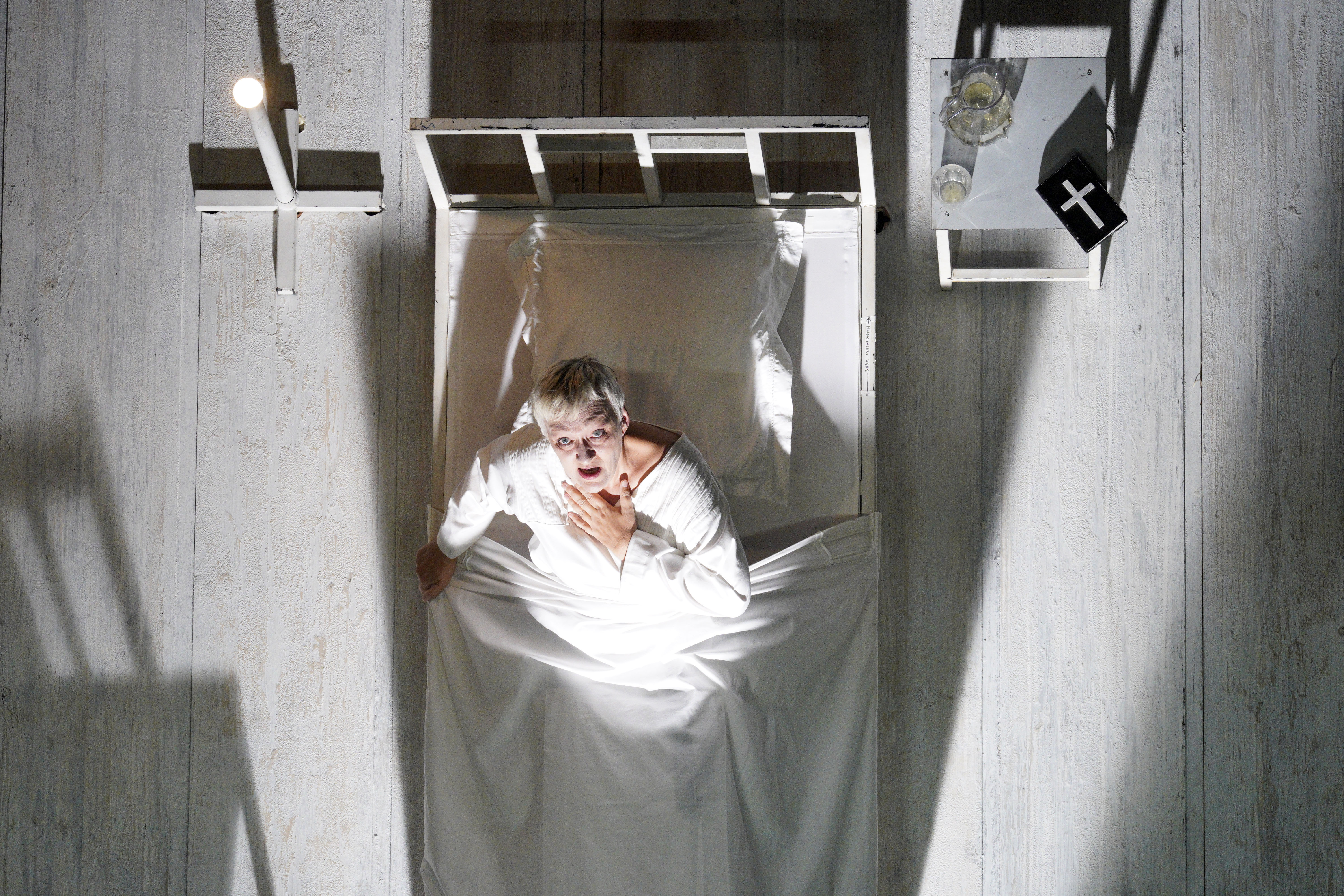
There are other important aspects at work that help in creating the verisimilitude of this monumental death scene.
The first aspect is the physicality of the scene. Michaela is standing vertically on a ledge that looks like the baseboard of the bed. She is strapped in with a seatbelt, and the bedsheets are then fastened around her. It is more common for an opera singer to use the entirety of the stage for a scene as dramatic as this, fully able to utilize space and movement to convey intense emotion, but here Michaela is constricted, confined. She literally has nowhere to go, either physically in the moment, or more conceptually on the inexorable pathway to her character’s death.
 Michaela Schuster being strapped into the bed backstage before it is positioned onstage.
Michaela Schuster being strapped into the bed backstage before it is positioned onstage.
She must think constantly about each physical movement. She is depicting a woman lying in bed, but she is fully upright throughout. How do you move, how do you lift yourself up, what muscles would you be using, what would the language of your body be? It’s something that she worked on in-depth, both herself and with our revival director, Daniel Izzo, and the results are stunning and deeply realistic.
The second aspect in building the authenticity of the scene is the musical language. Poulenc brings a very particular rhythmic line to this opera. As Michaela notes the piece is “Dialogues of the Carmelites” and musically it must be a conversation. There must be a fluidity to the language that approaches the rhythmic cadence of French speech. She worked with Eun Sun Kim to find that framework, and at a certain point found that it clicked into place, allowing her to stop thinking about rhythm and start being “in” the language. She likened it to works like Schoenberg’s Erwartung and the operas by Berg, Lulu and Wozzeck, which call for a similar cadence of speech.
The third element that helps with creating a realistic death scene, are the other singers on stage. In this case Heidi Stober is playing Blanche and Melody Moore is playing Mother Marie. The intensity these singers give is critical to what Michaela can do on stage. We generally don’t get to see Heidi’s expressions in this scene—she is facing upstage to Michaela, with her back to the audience. But Michaela tells me that Heidi is completely in role every second of their interactions. She can play off Heidi, finding the emotional core of “Sehnsucht” or yearning—a deep desire to connect with the daughter Madame de Croissy never had. That is only possible when the fellow singers on stage are living fully their roles, and that is very much the case here.
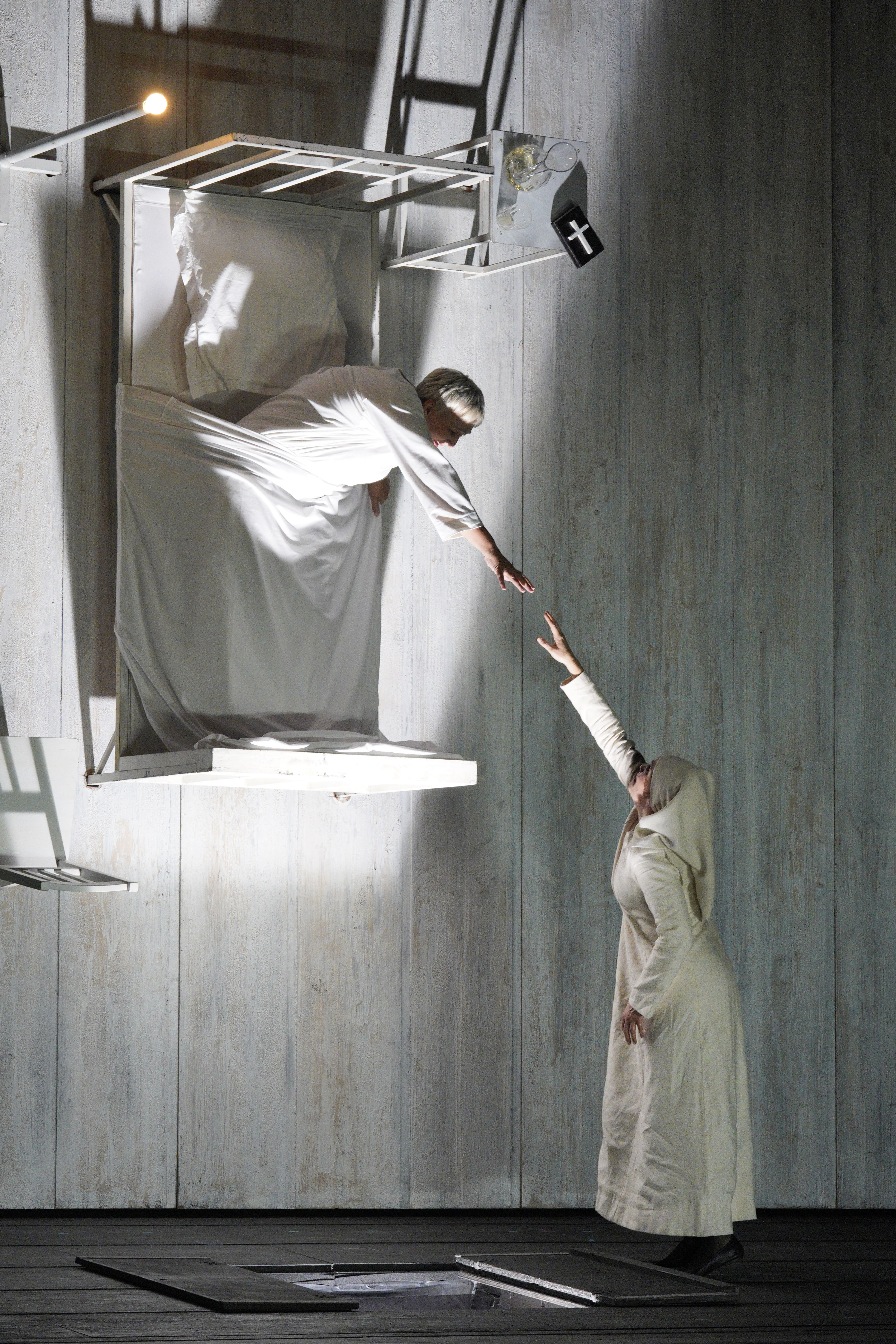
A scene like this is one of those realizations only possible on the opera stage. A rush of emotion, of feeling, of lived experiences, playing out with searingly impactful music, and a staging that takes us fully into the world of a dying woman in a way where we feel complete vulnerability ourselves. We are taken directly into the agony of Madame de Croissy, but understand through the music that this is a progression through the last moments of life and on into something else. What a singer must do to take us on that journey is what defines greatness on stage—the ability to coalesce an emotional portrayal so intense that it can be conveyed with complete authenticity to 3,000 people in one moment.
Knowing a little of how a great artist like Michaela journeys through that emotion herself gives a glimpse of the depth of work that happens beyond just the notes and words in the score to give life (and death) to so extraordinary a character.
I fervently hope that you will be able to see Michaela’s portrayal of Madame de Croissy before we close on October 30, and the equally emotive portrayals each of her fellow cast members makes in the production. Each of the nuns must find that same inner strength, and it is a privilege to see that fill our stage in such a transcendent way across so many incredible artists. This is a piece on stage not to be missed.
